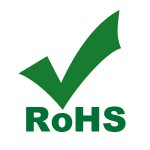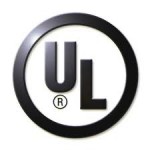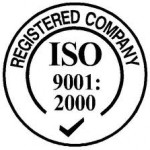Prosper Electronics and Ceptor Labs are certified at following certificat:

RoHS – The RoHS Directive refers to Directive 2002/95/EC of the European Parliament and of the Council of 27 January 2003 on the restriction of the use of certain hazardous substances in electrical and electronic equipment.
This directive prohibited the sale of any new electrical and electronic equipment containing more than the allowable levels* of lead, mercury, cadmium, hexavalent chromium, PBB (polybrominated biphenyl), or PBDE (polybrominated diphenyl ether) after July 1, 2006.
The purpose of this Directive is to approximate the laws of the Member States on the restrictions of the use of hazardous substances in electrical and electronic equipment and to contribute to the protection of human health and the environmentally sound recovery and disposal of waste electrical and electronic equipment.
 REACH – It is the European Community Regulation on chemicals and their safe use (EC 1907/2006). It deals with the Registration, Evaluation, Authorisation and Restriction of Chemical substances. The law entered into force on 1 June 2007.
REACH – It is the European Community Regulation on chemicals and their safe use (EC 1907/2006). It deals with the Registration, Evaluation, Authorisation and Restriction of Chemical substances. The law entered into force on 1 June 2007.
The aim of REACH is to improve the protection of human health and the environment through the better and earlier identification of the intrinsic properties of chemical substances. At the same time, REACH aims to enhance innovation and competitiveness of the EU chemicals industry. The benefits of the REACH system will come gradually, as more and more substances are phased into REACH.
The REACH Regulation places greater responsibility on industry to manage the risks from chemicals and to provide safety information on the substances. Manufacturers and importers are required to gather information on the properties of their chemical substances, which will allow their safe handling, and to register the information in a central database run by the European Chemicals Agency (ECHA) in Helsinki. The Agency acts as the central point in the REACH system: it manages the databases necessary to operate the system, co-ordinates the in-depth evaluation of suspicious chemicals and is building up a public database in which consumers and professionals can find hazard information.
The Regulation also calls for the progressive substitution of the most dangerous chemicals when suitable alternatives have been identified.
One of the main reasons for developing and adopting the REACH Regulation was that a large number of substances have been manufactured and placed on the market in Europe for many years, sometimes in very high amounts, and yet there is insufficient information on the hazards that they pose to human health and the environment. There is a need to fill these information gaps to ensure that industry is able to assess hazards and risks of the substances, and to identify and implement the risk management measures to protect humans and the environment.
 UL – UL is a global independent safety science company offering expertise across five key strategic businesses: Product Safety, Environment, Life & Health, Knowledge Services and Verification Services. ULs breadth, established objectivity and proven history mean we are a symbol of trust and enable us to help provide peace of mind to all. UL also evaluates and certifies the efficiency of a company’s business processes through its management system registration programs.
UL – UL is a global independent safety science company offering expertise across five key strategic businesses: Product Safety, Environment, Life & Health, Knowledge Services and Verification Services. ULs breadth, established objectivity and proven history mean we are a symbol of trust and enable us to help provide peace of mind to all. UL also evaluates and certifies the efficiency of a company’s business processes through its management system registration programs.
When the industry was preparing for the July 2006 implementation of this wide-reaching environmental directive, UL understood the need for its constituents and customers to manage any impacts on existing certifications in a predictable, efficient, and cost-effective manner. This guide was created for that purpose.
Information that UL had gathered regarding the impact on electronic products of RoHS material compliance-based changes suggested that there would be very limited impact relevant to end product safety compliance. There might have, however, been some limited impact on product reliability.
Therefore, unless field evidence indicates the need to do otherwise, for the industries comprising ITE (UL/IEC 60950), consumer electronics (UL/IEC 60065), medical devices (UL/IEC 60601), and laboratory equipment (UL/IEC 61010), UL has adopted the following practice:
UL does not need to be notified for changes in status for any components or materials that are not identified by UL in the certification file as Safety Critical Components (SCCs), i.e., components and materials described in the UL Follow-up Service (FUS) Procedure.
For some product types, SCCs are limited to components or materials that relate to risk of injury or fire. In other product types, SCCs also include components or materials that impact essential equipment performance.
UL assumes SCCs whose material (or subassembly material) composition has changed substantially to attain RoHS-compliant status will bear a distinct part number from the previous (nonRoHS-compliant) version. This assumption is based on electronic Industry initiatives to identify RoHS-compliant parts.
SCCs that carry UL Listing or UL Recognized Component status before and after any RoHS-related material change, and that do not incur any change in published ratings (form, fit and function) or conditions of use, shall be presumed to have no impact on the compliance of the overall end product. However, the UL certification (FUS) document will need to be amended to reflect any new part numbers.
For SCCs that are UL Recognized Components but incur a change in any rating or condition of use or have altered performance characteristics that could impact the compliance of the overall end product, an assessment of the impact of the material change will be needed. The scope of the investigation will need to be determined on an individual basis.
 ISO 9001 – Quality Management Standard. ISO 9001 is the internationally recognised standard for the quality management of businesses.
ISO 9001 – Quality Management Standard. ISO 9001 is the internationally recognised standard for the quality management of businesses.
ISO 9001 applies to the processes that create and control the products and services an organisation supplies. It prescribes systematic control of activities to ensure that the needs and expectations of customers are met. It is designed and intended to apply to virtually any product or service, made by any process anywhere in the world. ISO 9001 is one of the standards in the ISO 9000 family.
Implementing a Quality Management System will motivate staff by defining their key roles and responsibilities. Gain ISO 9001 certification by completing our Free Quote form. Cost savings can be made through improved efficiency and productivity, as product or service deficiencies will be highlighted. From this, improvements can be developed, resulting in less waste, inappropriate or rejected work and fewer complaints. Customers will notice that orders are met consistently, on time and to the correct specification. This can open up the market place to increased opportunities.
